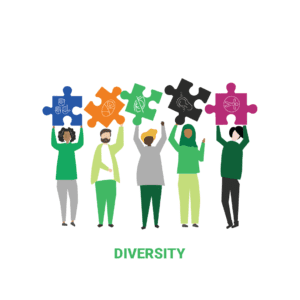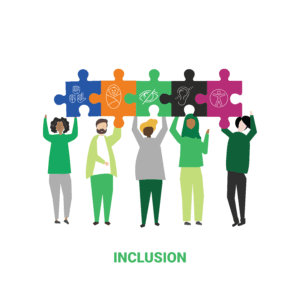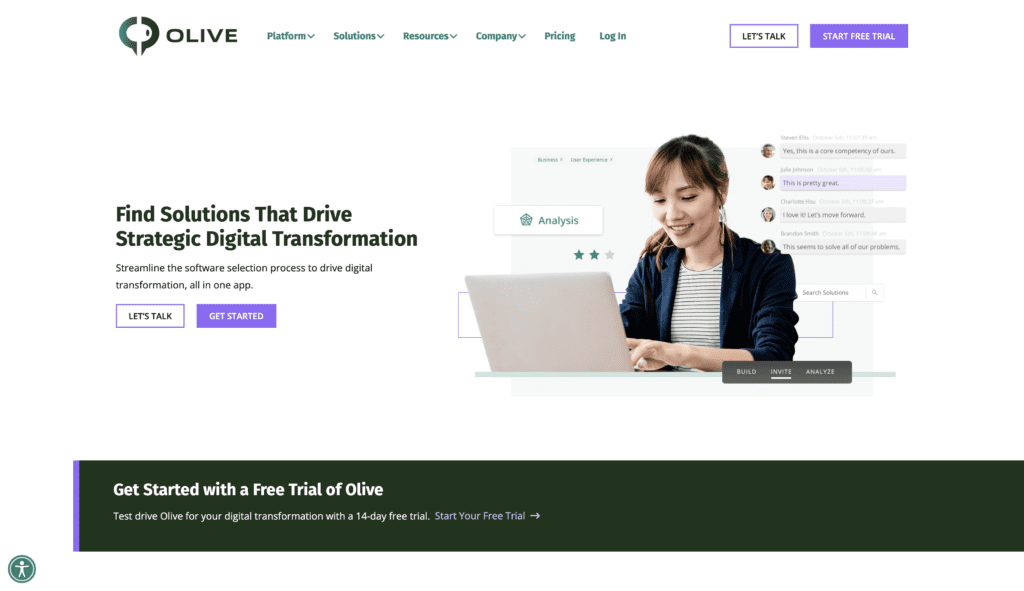The Importance of Diversity and Inclusion in Design

Over the past few years, you may have noticed a massive change in the digital marketing industry as it has become more diverse and inclusive. In the summer of 2020, the Black Lives Matter (BLM) movement gained momentum with the George Floyd protests leading to social unrest that shook the United States. The movement influenced conversations about the lack of representation of people of color and minority groups across the digital marketing industry. According to Meta Research, 59% of people say they are more loyal to brands that stand for diversity and inclusion. Integrating diversity and inclusion in design benefits both the brand and the target audience.
What Is Diversity and Inclusion in Design?
Diversity and inclusion are critical to the success of your marketing campaigns. Unfortunately, they have become buzzwords that many people don’t understand.
Keep reading to learn more.
Diversity and Inclusion
Diversity is the presence of a variety of different communities of people. Diversity in your marketing designs is not as simple as including one to two people of color on your website. The purpose of diversity in your digital design assets is to help authentically connect with your audience. 
Inclusion is the diverse perspectives that create methods to connect with diverse communities. Inclusive design means creating digital design assets that consider and accommodate the needs of people from all backgrounds and abilities. Inclusive design creates better representation and communication, which allows information to be more equitably shared across digital marketing platforms.
Diversity and inclusion in design may include factoring different design methods on digital marketing platforms to appeal to various groups based on:
- Age
- Appearance
- Ethnicity, race, nationality
- Gender & sexuality
- Health & Disabilities
- Language
- Religious beliefs
- Culture
- Socioeconomic status
- Economic situation
- Geographic location
- Accessibility
Diversity in digital marketing doesn’t mean you need to target each possible demographic; it means recognizing and understanding your target audience and ensuring those groups are represented and included in marketing efforts.
Similar to diversity, inclusion in design is to fulfill as many of the targeted audience’s needs, not about targeting each possible demographic. The main focus is to create digital design assets that can be accessible by a broad, diverse group within the targeted audience.

Why Is Diversity and Inclusion in Design Important?
Diversity and inclusion in design are about empathizing and adapting designs to the target audience to address the various needs they may have. Designing with diversity and inclusion in mind will increase the target audience’s loyalty, trust, and engagement. According to MarchTech, lack of diversity will cost you sales: 53% of African-Americans, 40% of Hispanics, and 58% of LGBTQ+ stopped using a brand because of representation issues. By prioritizing diversity and inclusion principles, it can positively impact the target audience by fostering a sense of belonging and optimizing the critical messages of the digital marketing design assets.
Diversity and Inclusion Design Best Practices
Research the Target Audience
Address who is engaging with the design and who is not, and question whether there is a specific reason for the lack of engagement. This will allow you to recognize the traits and needs of your current audience and identify gaps in your design methods that may be causing a particular group of people to feel excluded.
Identify Exclusions
When designing, question whether the design excludes any type of community of your target audience. Uncover those points of exclusion and compile an understanding of exactly how and why people are excluded. Use the findings to inspire new ideas and highlight opportunities to generate inclusive solutions.
For example, when designing materials to communicate with the target audience, it is essential that information is easily digestible and colors are well contrasted for all people to see the message. According to Colour Blind Awareness, about 300 million people worldwide experience color blindness. A great tool to help optimize visual graphics to help advance the accessibility of the design is to use Adobe Color’s accessibility color tools.
Use Inclusive Language and Typefaces
When designing, use inclusive language to avoid excluding anyone from the target audience. Here are some examples of how to use inclusive language:
- Avoid words and phrases that indicate gender bias
- For example: Avoid stereotypes, like using she/her pronouns for marketing that targets family caregivers. Instead, use neutral pronouns such as they/them/theirs to include men and non-binary people.
- Stay informed on the preferred names for certain groups of people
- For example: Instead of using the term “homeless,” use terms like people without housing or people experiencing houselessness.
- Never use any type of slurs or any terms rooted in oppression
While it’s important to use inclusive language, consider which typeface you choose to present the message. Choose an easy-to-read typeface to make the message as accessible as possible. This enhances legibility and readability for people with poor vision, learning disabilities, aphasia, dyslexia, or low adult literacy. The key to choosing easy-to-read typefaces is to pick a simple, unembellished, and clear font.
Use Diverse and Inclusive Imagery
Having representation in your design helps the audience feel more connected to a brand. Whether using stock imagery or custom photography, strive to showcase a range of ages, body types, races/ethnicities, cultures, and physical abilities.
Seek Feedback from Different Communities
When designing, it’s imperative to be open-minded and involve people from different communities throughout the design process. Different perspectives will help avoid biases and optimize digital design assets.
Want To Get Started Marketing With Diverse and Inclusive Designs?
At Online Optimism, diversity and inclusion efforts are a core priority. We recognize the importance of practicing diversity and inclusion in our marketing and advertising strategies. Our Optimists constantly seek feedback from diverse communities and stay educated on diverse and inclusive practices by attending in-depth anti-racism training annually.
If you want to get started marketing with diverse and inclusive designs but aren’t sure where to start, contact Online Optimism today!
